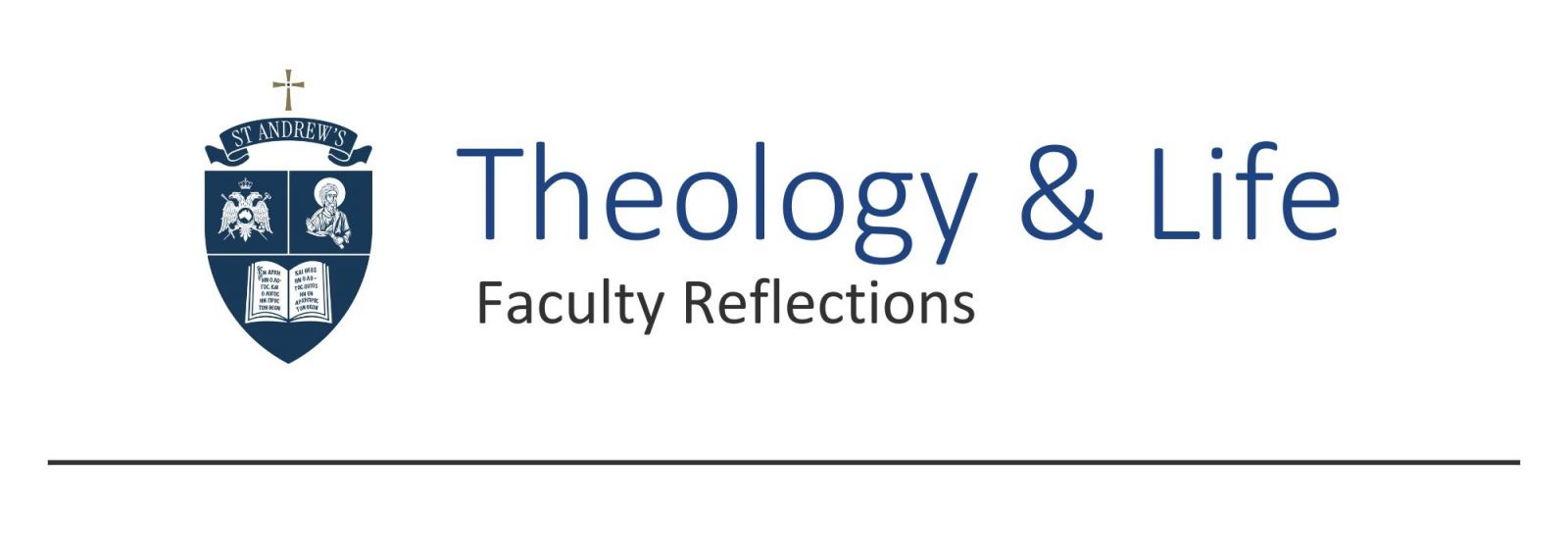- Home
- About us
- Students
- Courses
- Research
- Library
- News & Events
- Gallery
- Contact
- Our Blog
Latest News

Icons: Windows into Eternity
![]()
by Associate Professor Philip Kariatlis (Sub-Dean)
During the month of October, and more specifically on the Sunday that falls between the 11th and 17th of this month, the Church celebrates the memory of the Holy Fathers of the 7th Ecumenical Council (787AD)—those luminary witnesses to our faith in Jesus Christ our risen Lord—who triumphantly proclaimed the propriety of venerating icons. Far from simply being illustrative and historical representations of Christ and his ministry, or portraits of saintly men and women who lived a Christ-centred life all those years or centuries ago, icons bring us before—namely they make present—those who are depicted. They, therefore, are rightly deserving of our reverence, veneration and unqualified honour to the extent that they usher us into mystical heights of the life-begetting presence of Christ, the all-embracing arms of his holy Mother, and before the heavenly choir of saints. More specifically, icons are a theological proclamation ‘in colour’ of the reality of Christ’s incarnation, his concrete and tangible presence here on earth, as is explicitly stated in the Scriptures: “the Word became flesh and dwelt among us, and we have seen his glory, the glory as of a father’s son, full of grace and truth” (Jn 1:14). It is precisely for this reason that Jesus Christ, the only begotten Son and Word of God, can now be depicted, since He was seen on earth, heard, “touched with our own hands, concerning the Word of life” (1Jn 1). But more than explicit attestations of our Lord’s incarnation, and more than the fact that they bring us into genuine fellowship with our Lord and Saviour, icons open, and indeed pave, the way towards our salvation, but more broadly than that, the salvation and restoration of the entire cosmos.
Historically, the theology and meaning of icons were eventually clarified in the eighth century when a tumultuous dispute arose in the Church over the use of icons in worship. Known as the ‘iconoclastic’ controversy—since the word in Greek signifies, ‘the smashing of icons’—this violent and heated quarrel gave rise to a council in 787AD, which came to be known as the Seventh Ecumenical Council, taking place in Nicaea.[1] It was this council which came to shed light on the true meaning of icons, outlining not only their legitimacy but also the appropriateness of their veneration. Simply put, the council claimed that to deny icons inevitably meant a renunciation of the core Gospel message that the eternal Son of God was incarnate, reducing this salvific and foundational event to a mere fictitious occurrence, and thereby also bringing into question the salvation of the human person.[2] One section of the doctrinal statement of the Council in Nicaea reads as follows:
We declare that we defend free from any innovations all the written and unwritten ecclesiastical traditions that have been entrusted to us. One of these is the production of representational art; this is quite in harmony with the history of the spread of the Gospel, as it provides confirmation that the becoming man of the Word of God was real and not just imaginary, and as such it brings us a similar benefit.[3]
From this passage, it is clear that the existence of icons was deeply connected with a concern to preserve a full and proper doctrine of the incarnation upon which the salvation of the human person rested.[4] Furthermore, it was believed that icons were nothing other than graphic expressions of the truth expressed in the Scriptures—the ‘Word’ in images. Overall, the doctrinal statement of the council became a triumphant confession of the Church’s faith that God had become human so that humanity could enjoy, by grace, all that God is by nature.
Reflecting further on the theological significance of icons, it can be said that just as the written words of the Scriptures are able to bring the faithful into an immediate encounter withthe express Image and Word of God, so too, can visual images—namely, icons—do the same. Though silent, icons convey a heavenly message of the ultimate permanence of humanity and the world when transfigured and united to Christ. Therefore, icons are a striking reminder that this transient world—indeed, the entire universe—finds its true purpose when it opens itself up to the sweet-smelling fragrance of eternity. Specifically, in the icon of Jesus Christ, the uncreated God assumes a creaturely and circumscribable face—“a beauty that can save the world” as Dostoevsky puts it—with which the created human person can enter into a relationship, experiencing, through this, the everlasting peace and tranquil joy of Christ Himself. Accordingly, icons ‘pass us over into life’[5]—indeed, though ‘earthly’, they extend forth towards the threshold of “the other everlasting life”[6]— allowing us thus to behold, in the here and now—and not as some past event—the radiant and everlasting light of Christ, his measureless love and unfathomable compassion that will inevitably reign in the life of the kingdom to come.
That icons bring us into the very presence of what is beheld can be seen in the fact that in Orthodox icons faces are always frontal, depicting two eyes that gaze back towards those beholding these, inviting them to become active and constituent elements of what is depicted. That is to say, no longer are we external observers of the heavenly realm; on the contrary, through an icon, we experience Christ’s pledge of future victory in the timeless ‘present’. In an icon, this world and the next are held together, declaring, silently yet loudly at the same time, that we are in the midst of Jesus Christ, “seated at the right hand of the throne of God” (Heb 12:2). Indeed, standing before an icon, we can, in truth, joyously exclaim: “We have seen the true Light, we have received the heavenly Spirit, we have found the true faith, worshipping the undivided Trinity which has saved us.” Before an icon, we are brought within the cusp of the world to come; in this way, the natural flow of history is transformed and transcended; no longer are events seen from the perspective of the past, but they are brought together into our present, reuniting and reintegrating what was formerly scattered and dispersed. It is precisely in this sense that holy icons have rightly been described as ‘windows into eternity’ in so far as they offer glimpses of God’s heavenly kingdom in the here and now, a reality over which death no longer has any sway. Indeed, as windows into the world beyond, icons bring together the heavenly and earthly realms, uniting them in a most intimate manner, inviting us to come into direct and immediate contact with this transfigured heavenly realm. Seen from this eternal perspective, icons should occasion feelings of celebratory joy and profound gratitude within, to the extent that we are given a foretaste of the fullness of fellowship and freedom with Christ that the future holds for the entire world.
In light of this eternal reality opened up before us, icons potentially provide a corrective to our contemporary culture; they restore and reconcile, reminding us of another world which is not self-serving and self-centred, but rather one as intended by God—that is, a life in fellowship with Christ, our neighbour and the world more broadly; a life gifted to us for the sole purpose to discover the Love that gave birth to the world in the first place; a love so strong which death could not contain, but on the contrary ushered in a life which now extends into eternity. In this way, icons are a living witness that through the Cross the joy of the Resurrected Christ has penetrated the world bestowing the abundance of life upon all. Standing before an icon and venerating it, we receive life to the extent that we are brought into a life-giving presence, a world in which Christ’s reign has smashed the bonds of death In this way, the icon invites us to behold the world and life differently, namely a life in which Christ can be seen to be “all and in all” (Col 3:11), inviting us into lasting and eternal unity with Him.
[1]This Council is also referred to as the 'Council of Nicaea II'. Before that, the Council of Trullo (691AD) had insisted upon the legitimacy of icons.
[2]From this it is clear that the Christian tradition of the first common Christian millennium saw the rejection of icons not simply as an indifference to art, but as a Christological heresy not affording a full and fitting doctrine of the Incarnation.
[3]Doctrinal Statement, 7th Ecumenical Council cited in Jaroslav Pelikan (ed), Creeds and Confessions of Faith in the Christian Tradition (New Haven: Yale University Press, 2003), 1:235 & 237.
[4]Another passage from the Council affirmed: "those who accept in word the coming of the Word of God in the flesh, but refuse to contemplate him through icons, thus receiving only theory – but in fact denying – our salvation." (Synodikon of Nicaea II).
[5]Resurrection Canon, Ode 1.
[6]Resurrection Canon, Ode 7: “Θανάτου ἑορτάζομεν νέκρωσιν, Ἅδου τὴν καθαίρεσιν, ἄλλης βιοτῆς, τῆς αἰωνίου ἀπαρχήν, καὶ σκιρτῶντες ὑμνοῦμεν τὸν αἴτιον, τὸν μόνον εὐλογητὸν τῶν Πατέρων, Θεὸν καὶ ὑπερένδοξον [We celebrate that death has been put to death, Hades has been overthrown, and another, everlasting life has begun. And exulting we praise and extol the Cause, exalting the only God of the fathers, blessed and supremely glorious].”



.png)